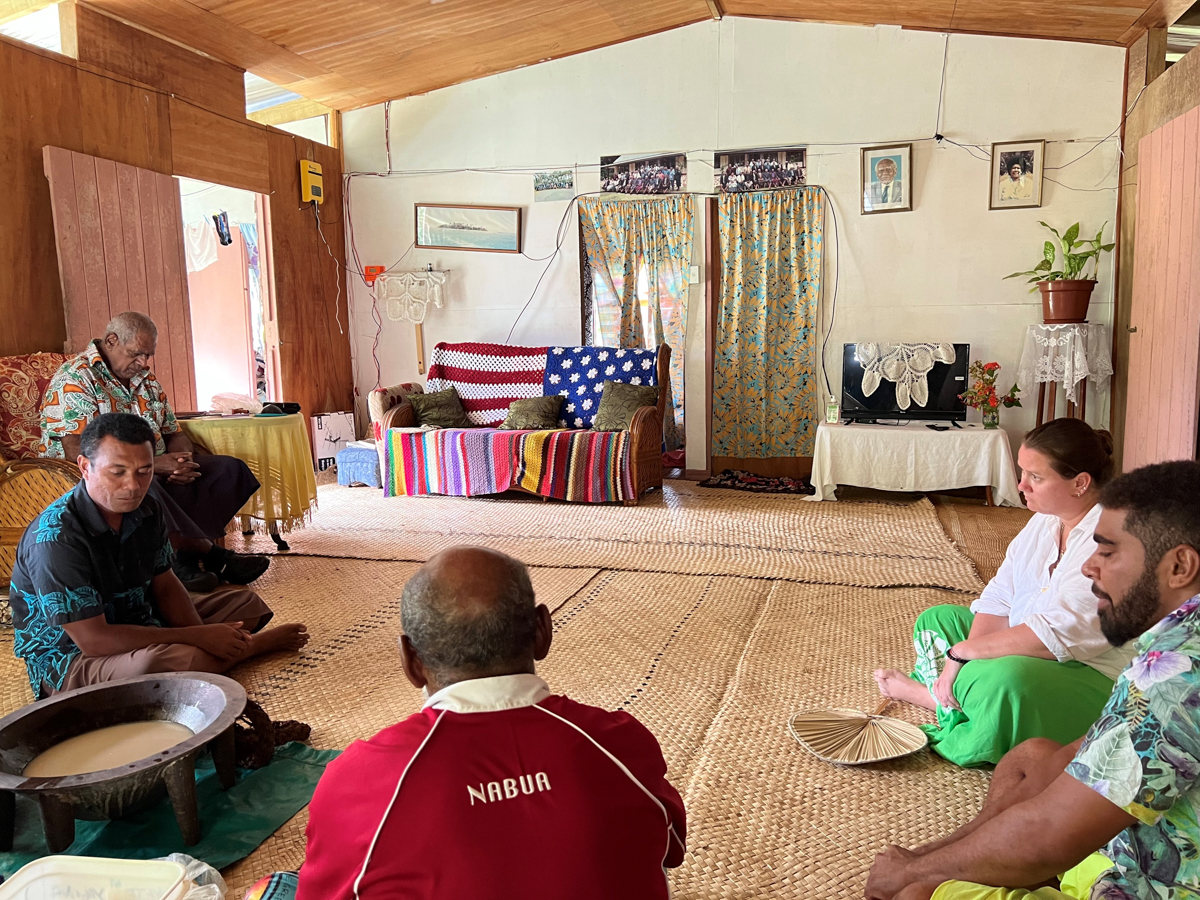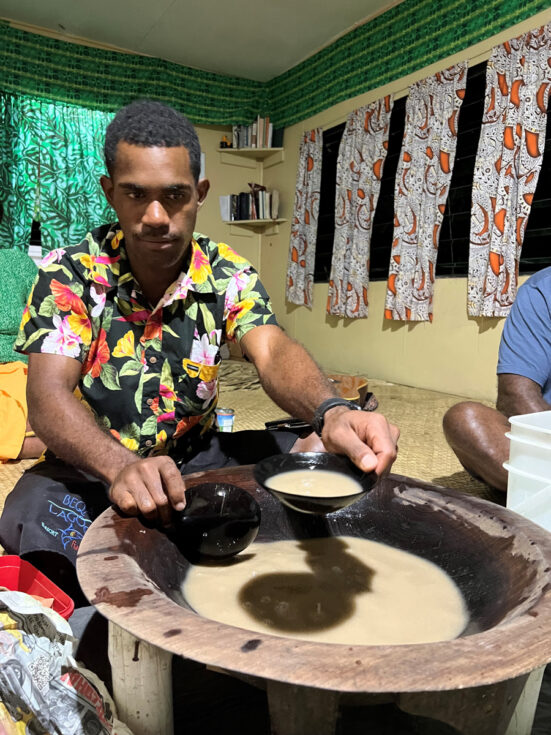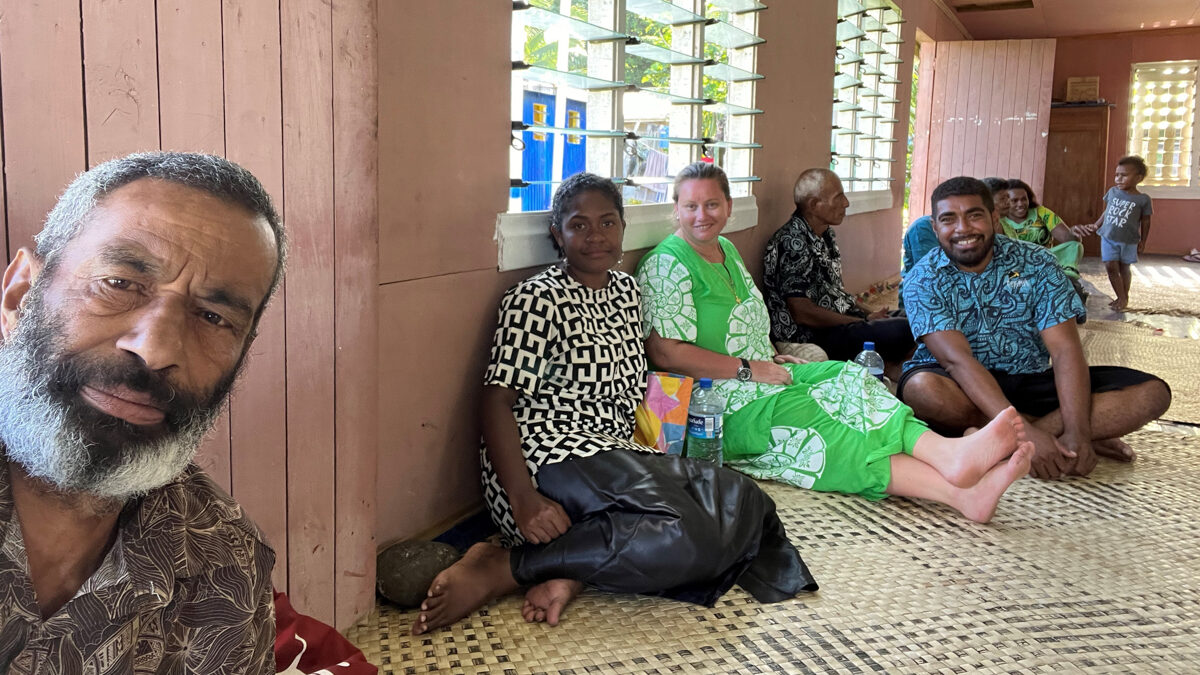A key component of the United Nations Endorsed Project Science Without Borders®: Conserving the Tropics is outreach and community engagement. During the joint outreach and fieldwork campaign with the Khaled bin Sultan Living Oceans Foundation (KSLOF) and Pacific Blue Foundation (PBF), four villages were visited in the Beqa-Yanuca Seascape. Community engagement and outreach are both important cultural practices for the Chief’s blessing and permission to work on the reef surrounding the villages, but they are also important for visiting scientists to gain valuable local knowledge about the nearshore ecosystem. The final component of the outreach program was to teach several local community members the survey methods for collecting coral reef transect data.
The lagoon is surrounded by several villages, each with its own unique character and traditions. The KSLOF and PBF team worked with four of these communities: Naisomo, Raviravi, Rukua, and Yunuca. The most important first step for community engagement in the Fijian islands is meeting with the head Chief and other community elders to receive permission to work in the waters near to their village. The meeting is called a sevu sevu. The sevu sevu must be done before any work in the water or on shore is started. It is considered extremely disrespectful if this cultural practice is not followed by outside visitors.
During the meeting with the Chief and his advisors, it is customary to partake in a ceremonial drink called kava. It is traditionally prepared by pounding sun-dried kava root into a fine powder, straining it, and mixing it with cold water in a large bowl called a tanoa. Tanoas are carved out of a native hardwood and often have designs to reflect the history of the village. The kava mixture is then poured and drunk out of a bilo, which are small cups carved from coconuts. As the kava is shared amongst the villagers and visitors, the Chief asks what the purpose of the visit is and how it will benefit the community.

During the sevu sevu in Rukua village, the community explained that the reefs surrounding their village were starting to bleach due to the very warm ocean temperatures. The bleaching conditions had been persisting over the past two weeks. They reported seeing a lot of pale and white corals, but the positive news was that many baby coral or coral recruits were witnessed growing on the reef. This is a sign of recovery for the reef, and the community hopes the recruitment will help repopulate the corals that were affected by the bleaching. After the kava ceremony, we set out to speak with several community members for their help with setting up the permanent monitoring sites inside and outside the marine protected areas along the fringing reef of the village. We were able to set up six permanent survey sites that we hope to continue monitoring through the Fijian Citizen Science Protocol.

The following day, the team traveled 11 km across the lagoon to the barrier island of the village Yanuca. During this kava ceremony, the Chief explained to the KSLOF team that traditionally, their main source of food and income is fishing. Unlike Rukua, where the soil is quite fertile due to frequent rain showers, the microclimate of Yanuca is much drier, making farming very difficult. Therefore, the community is heavily reliant on their nearshore fishery. Small boats and handlining fishing techniques are the most practiced in this village. After the kava ceremony, the women leaders of the village showed the team what the catch was of the day, which included small grunts, unicorn fish, and other reef-associated fishes. The women of Yanuca are responsible for reporting fish landings from the fishermen and have an impressive dataset that dates back almost 30 years! They explained to the team that there is a need for more fishery-based management in the seascape, and they hope the marine managers from PBF can help with analyzing the fisherman’s catch per unit effort and how that correlates to the current fish stock.

The Beqa-Yanuca Seascape’s strongest advocates for conservation are the communities that live there. Local stakeholder buy-in for the management and protection of the coral reef ecosystem is strongly rooted in cultural heritage and strongly influences their environmental practices. It is so important to involve the villages and communities that depend on the reefs to ensure that impactful change is successful. It was a very rewarding experience to have worked closely with people of both Yanuca and Rukua as they continue to be strong stewards of their marine ecosystem and I look forward to the next trip to The Beqa-Yanuca Seascape.